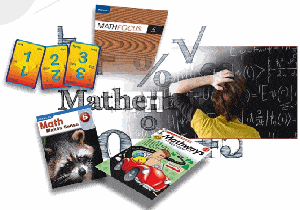Today we welcome guest blogger Michael Zwaagstra, M Ed. who has just released a groundbreaking study: Math Instruction that Makes Sense.

by Michael Zwaagstra
A solid understanding of mathematics is an important component of a well-rounded education. The ability to perform basic mathematical computations is a requirement of many entry-level jobs. In addition, careers in fields such as engineering, medicine, finance, and all of the sciences require a solid background in higher-level university mathematics, including calculus, statistics, and linear algebra.
Because math is such an important skill, schools have an obligation to ensure students learn key math concepts. Unfortunately, schools are largely failing in this regard. First-year post-secondary students are increasingly unprepared for university-level mathematics and this has led to a proliferation of remedial math courses at universities across Canada.
Many parents also choose to enroll their children in special tutoring sessions with organizations such as Kumon Math & Reading and Sylvan Learning Centre to fill in the gaps left by the public school system. Unfortunately, many parents cannot afford extra tutoring and this creates a two-tiered system that unfairly penalizes children whose parents cannot afford to pay for extra math tutoring.
Although there is solid evidence for traditional approaches to teaching math that involve mastering standard algorithms, practicing skills to mastery, and introducing concepts in incremental steps, most provincial math curricula and textbooks employ a different approach. This new approach to teaching math is based on a philosophy known as constructivism, which encourages students to come up with their own understanding of the subject at hand. As a result, there is very little direct instruction of important math algorithms or memorizing of basic math facts in many school classrooms.
This de-emphasis on drill and practice is reflected in the Western and Northern Canadian Protocol (WNCP) math curriculum document. WNCP establishes a common curriculum framework for the provinces of British Columbia, Alberta, Saskatchewan, and Manitoba as well as the three territories. There are a lot of references in this framework to conceptual understanding of math but virtually none to mastering the standard algorithms through drill and practice.
However, there is a big difference between “demonstrating a conceptual understanding” of mathematics and actually being able to solve equations accurately and efficiently. Just as most people would be very uncomfortable giving a driver’s license to someone who merely “demonstrates a conceptual understanding” of how to drive a car, we should be concerned about a math curriculum that fails to emphasize the importance of mastering basic math skills.
In order for students to receive a strong grounding math, they need to spend more time practicing math skills such as basic addition and subtraction along with the standard multiplication times tables. Students must practice their basic math facts frequently for it to become automatic.
It is common to hear math educators and curriculum consultants claim that a conceptual understanding of mathematics and the traditional emphasis on basic skills and standard algorithms are mutually exclusive. However, this is a false dichotomy. Mastering the standard algorithms on a step-by-step basis makes it possible for students to gain a deeper understanding of more complex mathematical problems.
Mathematician John Mighton, the founder of JUMP (Junior Undiscovered Math Prodigies), discovered this principle when tutoring students who had weak math skills. He found that students needed to have math problems broken down into small steps and that each step had to be mastered before moving to the next step. Although this technique, often referred to as scaffolding, went against the problem-based approach to teaching math currently employed in public schools, it proved to be highly effective.
In a randomized control study involving more than 300 Canadian fifth grade students, students who received instruction in the JUMP program were compared with those who were taught with the regular curriculum. Students in the JUMP program achieved more than double the growth in mathematical competencies after only five months. There are many other success stories from this program and its popularity is growing every year.
For our students to gain a solid understanding of math, schools must place a much stronger emphasis on mastering basic math skills and standard algorithms. Math curriculum guides need to specifically require the learning of standard algorithms and textbooks must contain clear step-by-step instructions as to their use. As the success of John Mighton’s JUMP program illustrates, all students are capable of mastering math if they receive the best instruction.
Michael Zwaagstra, M.Ed., is a research fellow with the Frontier Centre for Public Policy, a Manitoba high school teacher, and co-author of What’s Wrong With Our Schools and How We Can Fix Them.


